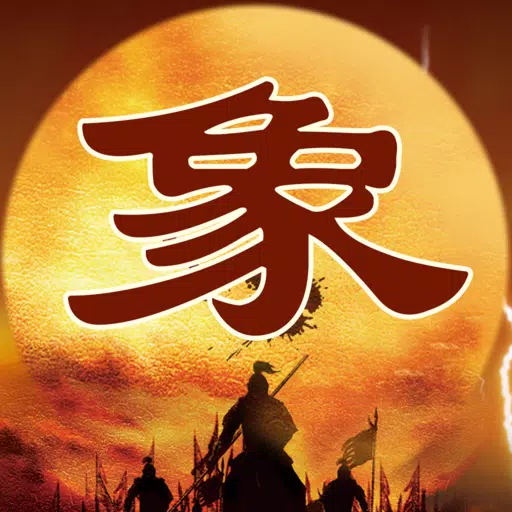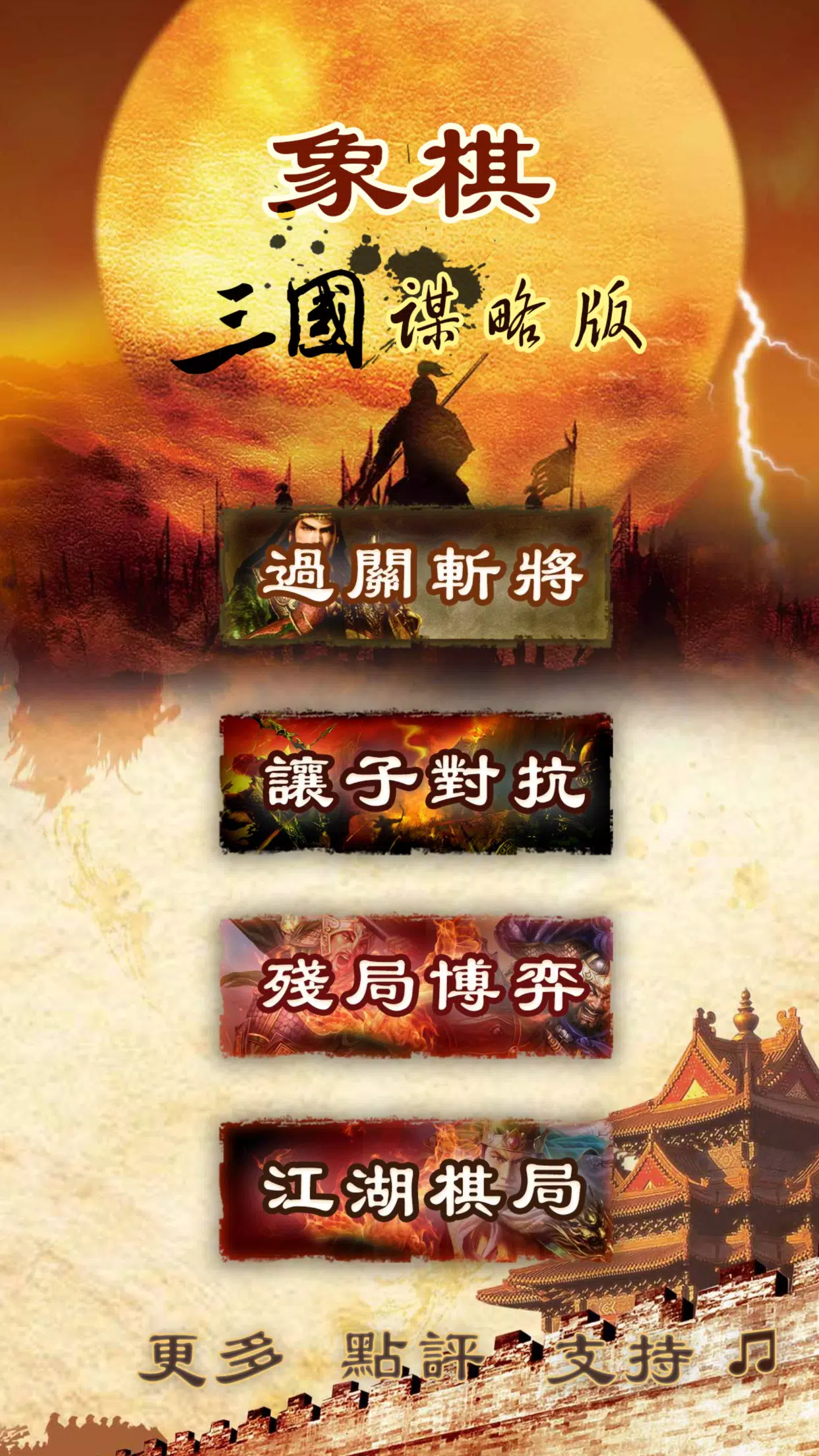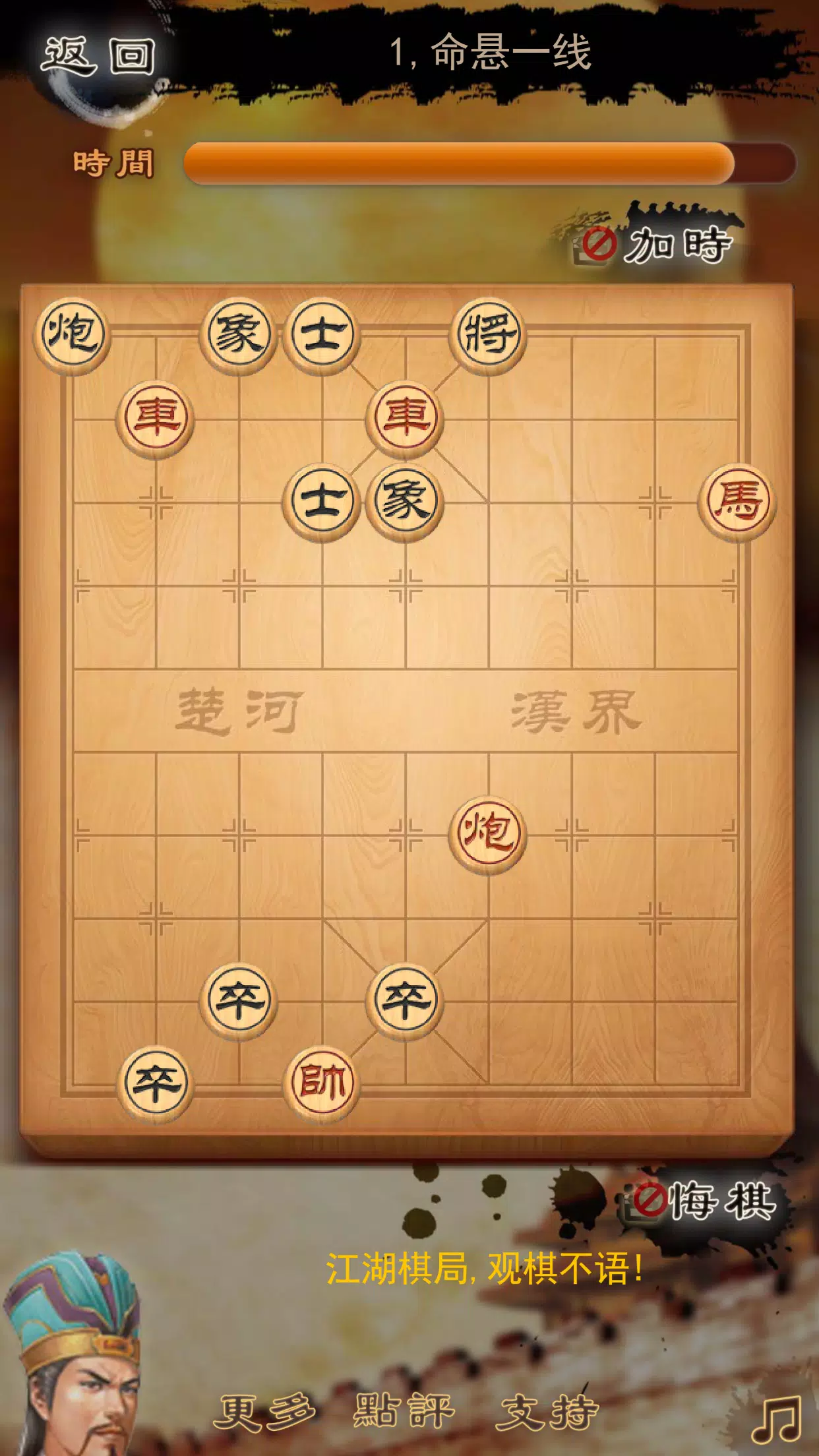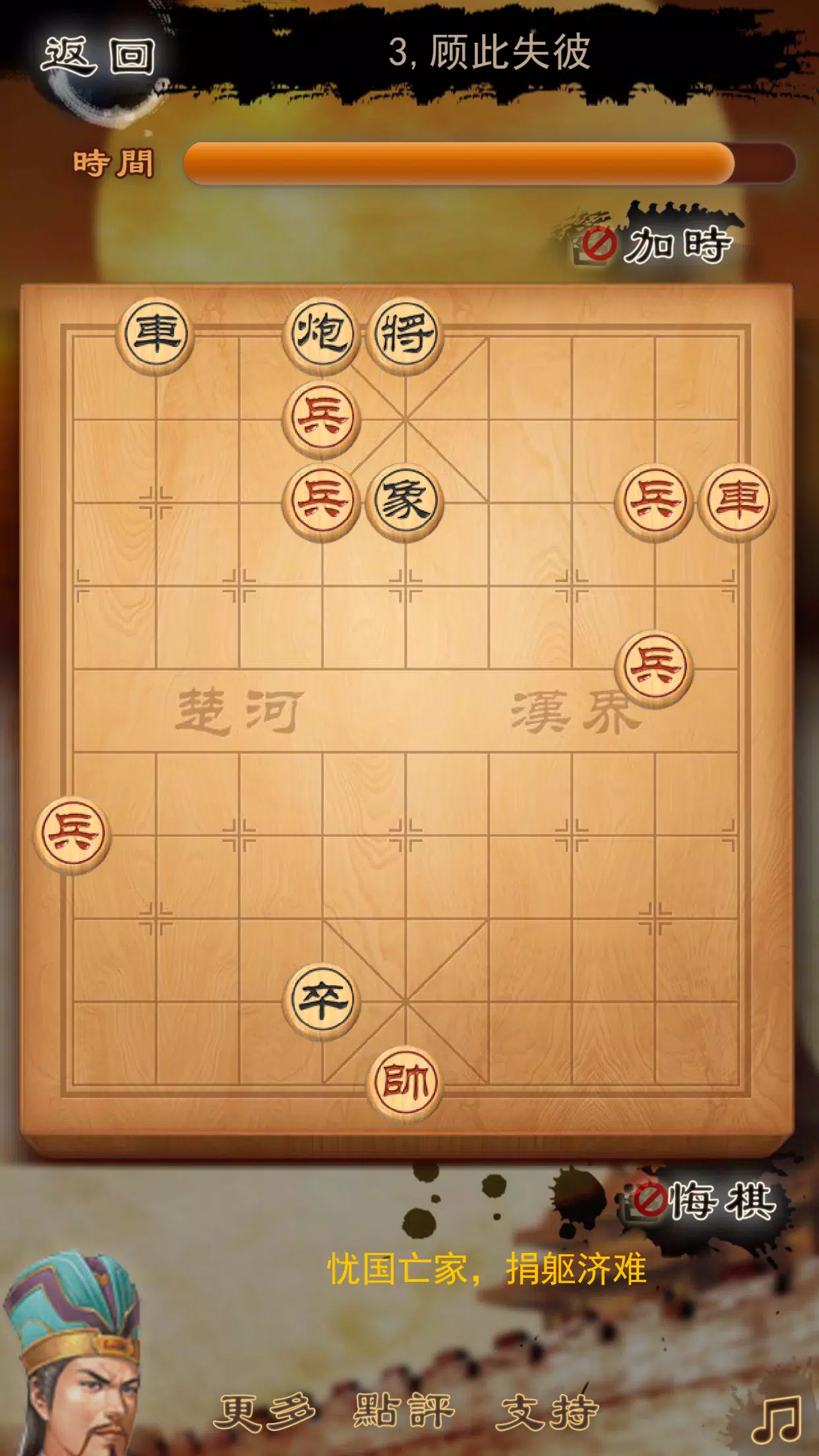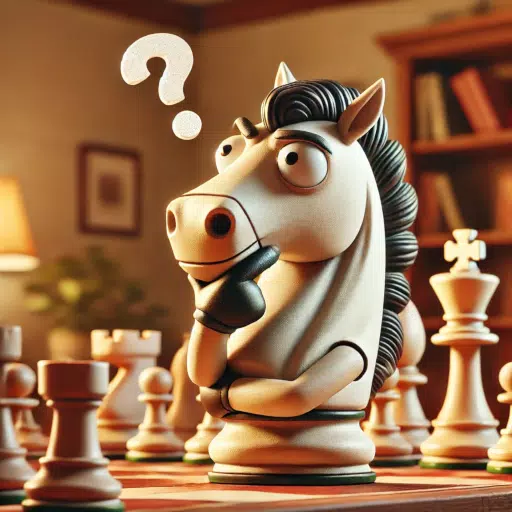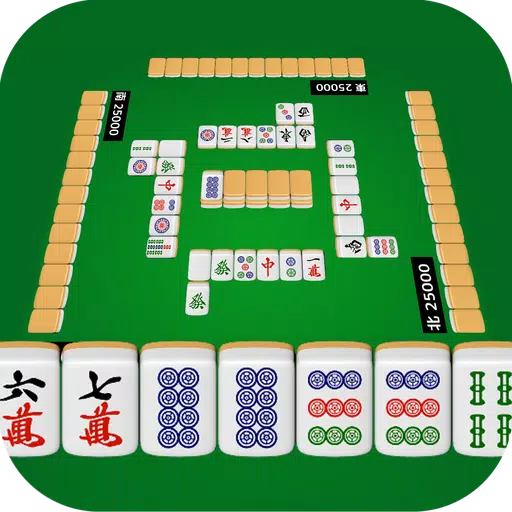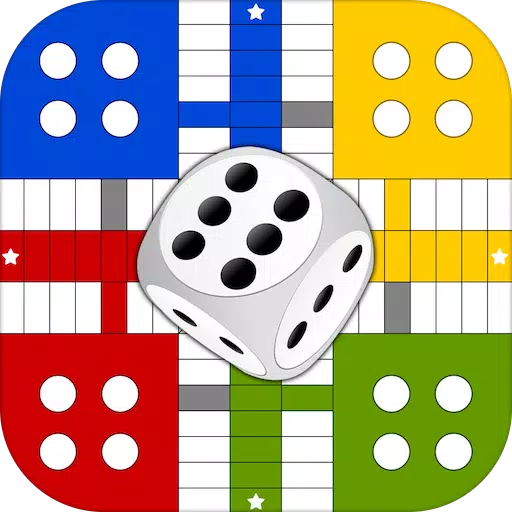A chess game that combines the theme of the Three Kingdoms, adding various modes of gameplay, can pass all levels, challenge all heroes, and can also quickly study the chess endgame. Xiangqi, a type of chess that originated in China, is a two-player confrontation game with a rich history. Due to the simplicity and enjoyment of the chess pieces, it has become a highly popular chess activity.
Chess Pieces
There are thirty-two chess pieces, divided into two groups: red and black. Each group consists of sixteen pieces, categorized into seven types. The names and quantities are as follows:
- Red Chess Pieces: One handsome, two rooks, two horses, two cannons, two phases, two shi, and five soldiers.
- Black Chess Pieces: One general, two horses, two cannons, two elephants, two advisors, and five pawns.
Handsome/General
The red side uses "handsome" and the black side uses "general." These pieces represent the leaders in the game and are the primary targets. They can only move within the "nine palaces," moving one square at a time either vertically or horizontally. The handsome and general cannot face each other directly on the same vertical line, as this results in an immediate loss for the moving side.
Shi/Advisor
The red side uses "shi" and the black side uses "advisor." These pieces are also confined to the "nine palaces" and can only move diagonally within this area, one square at a time.
Phase/Elephant
The red side uses "phase" and the black side uses "elephant." They move diagonally two squares at a time, known as "elephant flying field." Their movement is restricted to their own side of the "river boundary" and cannot cross the river. If a piece blocks the center of the "field" they are moving through, they cannot move, a situation known as "blocking the elephant's eye."
Rook/Chariot
The rook, or chariot, is the most powerful piece in Xiangqi. It can move any number of squares along a straight line, either horizontally or vertically, as long as no piece blocks its path. This is known as "the chariot's straight path." A rook can control up to seventeen points, hence the saying "one chariot can handle ten pieces."
Cannon
The cannon moves like the rook when not capturing a piece. However, to capture, it must jump over exactly one piece, whether friendly or enemy, known as "firing over a screen" or "crossing the mountain."
Horse/Knight
The horse, or knight, moves in an "L" shape, first moving one square horizontally or vertically, then one square diagonally. This movement is known as "the horse's day move." It can reach up to eight points around it, hence the phrase "eight directions of majesty." If another piece blocks its path, the horse cannot move, a situation called "tripping the horse's leg."
Soldier/Pawn
The red side uses "soldier" and the black side uses "pawn." Soldiers and pawns can only move forward, not backward, and cannot move sideways before crossing the river. After crossing the river, they can also move left and right, but only one square at a time. This movement significantly increases their power, leading to the saying "small pawns crossing the river can challenge the chariot."
Players take turns moving their pieces, adhering to the combat philosophy of "winning without fighting" from Sun Tzu's Art of War. The objective is to "checkmate" or "trap" the opponent's general (handsome). The red side moves first, and the game continues until a win, loss, or draw is determined. Through the complex interplay of attack and defense, reality and deception, and overall and local strategies, players can enhance their cognitive abilities.
Additional Game Information
Latest Version1.2.0 |
Category |
Requires AndroidAndroid 5.0+ |
Available on |
Three Kingdoms chess:象棋 Screenshots
Top Download
More >-

-

-

- Office69
- 4.2
-

-

-

-

-

-

-
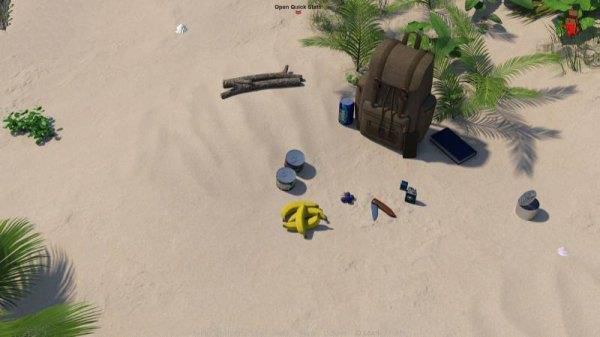
- Stranded Dick
- 4.1
Trending games
-

-

- Top Football Manager 2024 Mod
- 4.2 Sports
- Unleash your soccer management dreams with Top Football Manager 2024! Guide your team to greatness, bid on top players, and compete against global managers. Immerse yourself in stunning 3D graphics and experience real-time matches. Strategy and betting bring you closer to becoming a champion. Build your legendary team now!
-

-

- Traffic Car Shooting Games
- 4.4 Action
- Prepare for an adrenaline-packed experience with Traffic Car Shooting Games! Combining FPS shooting, highway traffic, and car shooting, this app offers a thrilling adventure. As a traffic shooter, use your sniper skills to eliminate gangster cars in challenging missions. With realistic graphics and a bazooka gun, you'll immerse yourself in the action and save the city from chaos.
-

- A Camp with Mom and My Annoying Friend Who Wants To Rail Her
- 4.3 Casual
- Immerse yourself in "A Camp with Mom and My Annoying Friend" on your 2-day camping adventure. Interact with Souma, Kyouko, and Kengo as they navigate unexpected twists and turns. Enjoy stunning animated scenes and explore 15 captivating scenarios in English, Chinese, or Japanese. Experience the unfiltered version for an authentic gaming experience.
-

- Mr Meat : Horror Escape Room
- 4.4 Casual
- Immerse in the bone-chilling Mr Meat, a horror escape room game. Navigate through a zombie psycho's lair, solving puzzles and outsmarting the undead. Protect the city from imminent devastation. Thrilling action, eerie atmosphere, and stunning graphics will keep you on the edge!
Latest Games
-
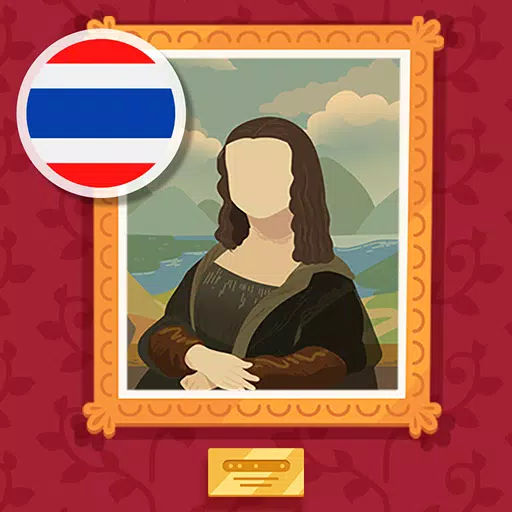
- ART FRENZY:GALLERY EDITION(TH)
- 5.0 Board
- Dive into the world of art with ART FRENZY: Gallery Edition, the thrilling art guessing game that tests your speed and knowledge. Compete to claim classic art cards in an exhilarating atmosphere every time you play. Are you ready to become the ultimate art collector?:art: Key Features:• Famous Paint
-
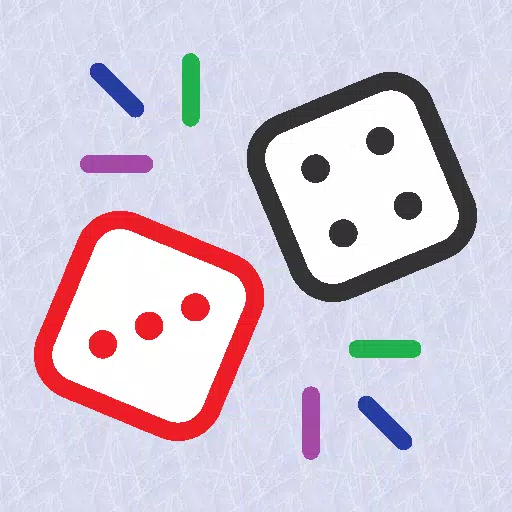
- Lucky Dice
- 2.6 Board
- Gather your friends and family for an exciting session of your favorite dice game right here! We've introduced an exhilarating new mode: compete in the League mode to win prestigious Cups and Medals. Remember, it's not just about luck; it's a showcase of your skills too! Are you a fan of dice games?
-

- Game of Dice: Board&Card&Anime
- 4.5 Board
- Dive into the thrilling world of 'Game of Dice,' a real-time multiplayer strategy board game that combines the excitement of dice rolling with strategic gameplay. Whether you're a seasoned board game enthusiast or new to the genre, 'Game of Dice' offers a unique experience that will keep you engaged
-

- PPPoker
- 4.0 Board
- PPPoker is the go-to online poker platform for private clubs, connecting poker lovers worldwide. Since its launch in 2016, PPPoker has been dedicated to delivering an unparalleled poker experience to millions of genuine players across more than 100 countries.With PPPoker, you can set up your own pri
-
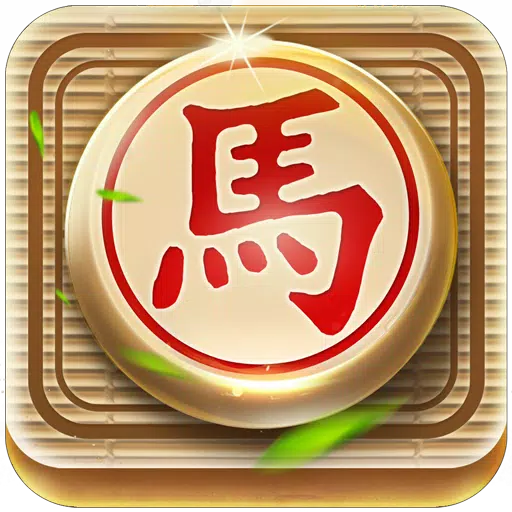
- Xiangqi - Play and Learn
- 3.7 Board
- Engage in the ancient art of Xiangqi with our versatile app, designed for both solo and multiplayer experiences. Whether you're looking to challenge the machine or practice with a friend offline, Xiangqi - Play and Learn offers a dynamic platform to hone your strategic skills. Mastering Xiangqi is a
-
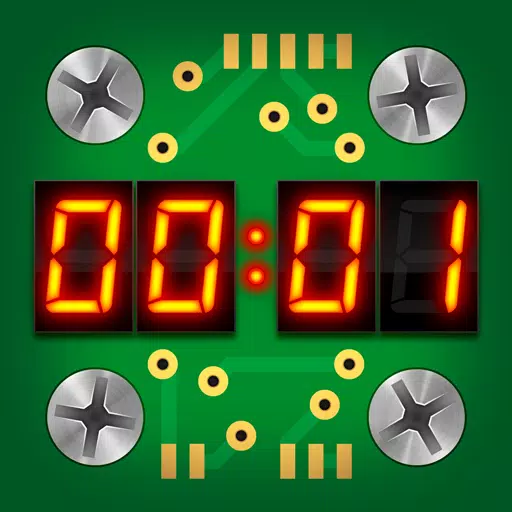
- Them Bombs
- 4.0 Board
- Imagine receiving a cryptic text message from the notorious Dr. TiNT, leading you and your friends straight to a ticking bomb. The clock is ticking—tic-toc, tic-toc—and every second counts. You're faced with critical decisions: should you cut the blue wire or the red one? How should you adjust the c
-

- PokerStars Play
- 4.2 Board
- Dive into the world of Texas Hold'em, poker tournaments, and casino games with PokerStars Play, where the excitement never stops. Are you ready to experience the thrill of winning big? DISCOVER THE BEST FREE TEXAS HOLD ‘EM AND CASINO GAMES Engage in thrilling Poker games and feel the adrenaline rush
-

- Game of goose Classic edition
- 2.8 Board
- Immerse yourself in the nostalgic charm of your childhood with the Game of Goose Classic Edition. This timeless board game, beloved by generations, including your grandmother, brings back the joy and simplicity of family game nights. With origins tracing back to as early as 1480, the game's history
-

- Bingo Voyage
- 3.4 Board
- Ahoy, Bingo enthusiasts! Get ready to embark on an unforgettable journey with Bingo Voyage, the premier Bingo experience that combines the thrill of the game with a global cruise adventure! Set sail with your customizable avatar and dive into exciting Bingo games while exploring iconic destinations
Breaking News
-
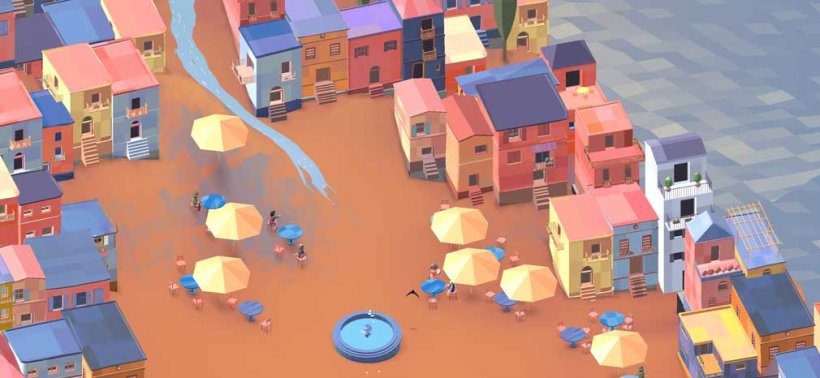
Emoak launches its latest casual puzzle game, now available on mobile platforms
-

No Snooze? You Lose! SF6 Tournament “Sleep Fighter” Requires You to Rest
-

Stumble Guys joins hands with My Hero Academia, heroic adventures are waiting for you!
-

-
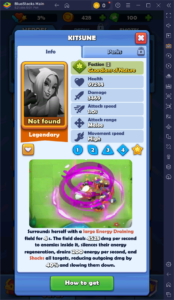
Discover the Ten Dominating Cards in LUDUS: PvP Arena's Battle Royale
-

Fortnite Re-Releases Paradigm Skin By Accident, Lets Players Keep It Anyways
